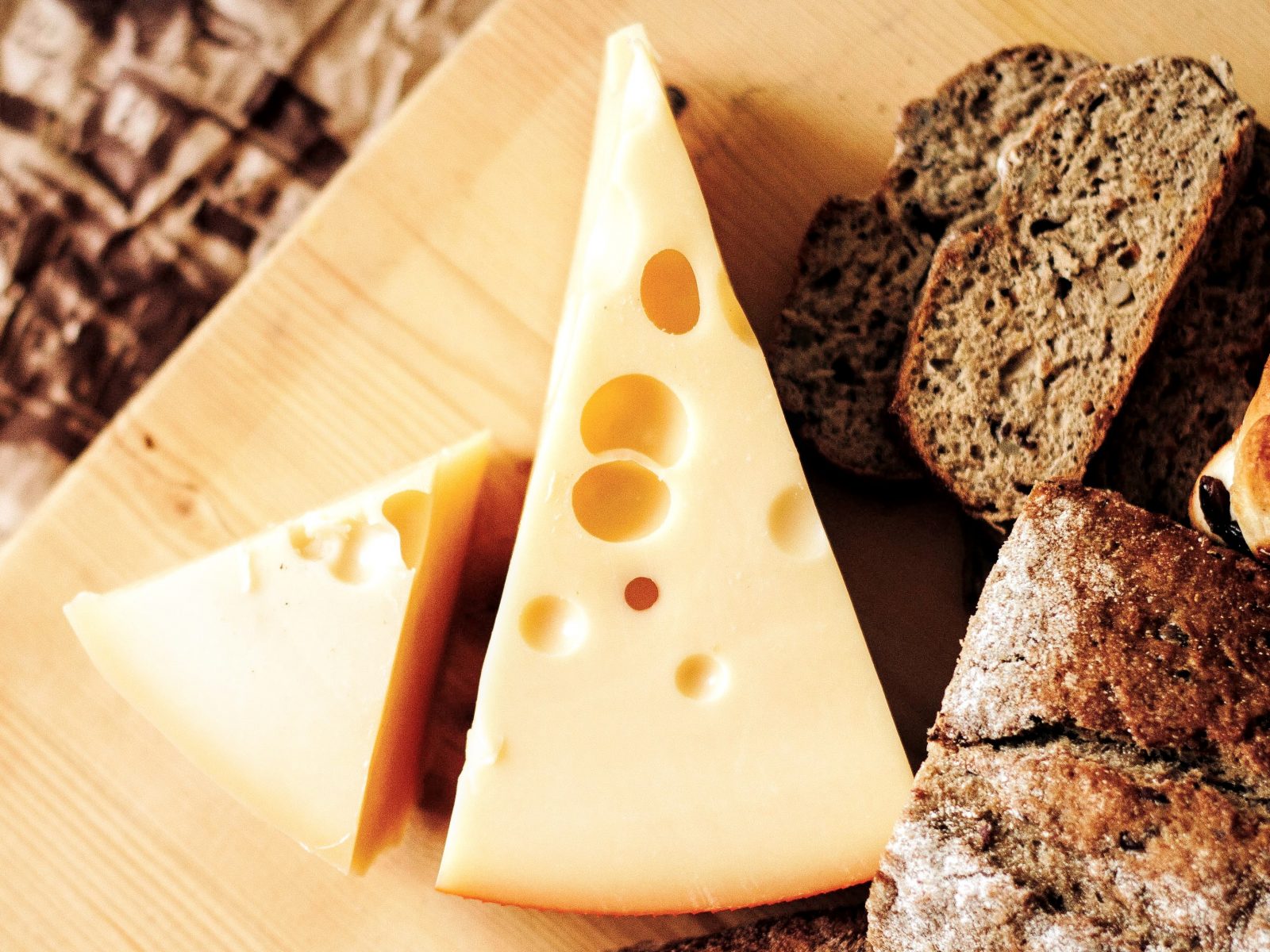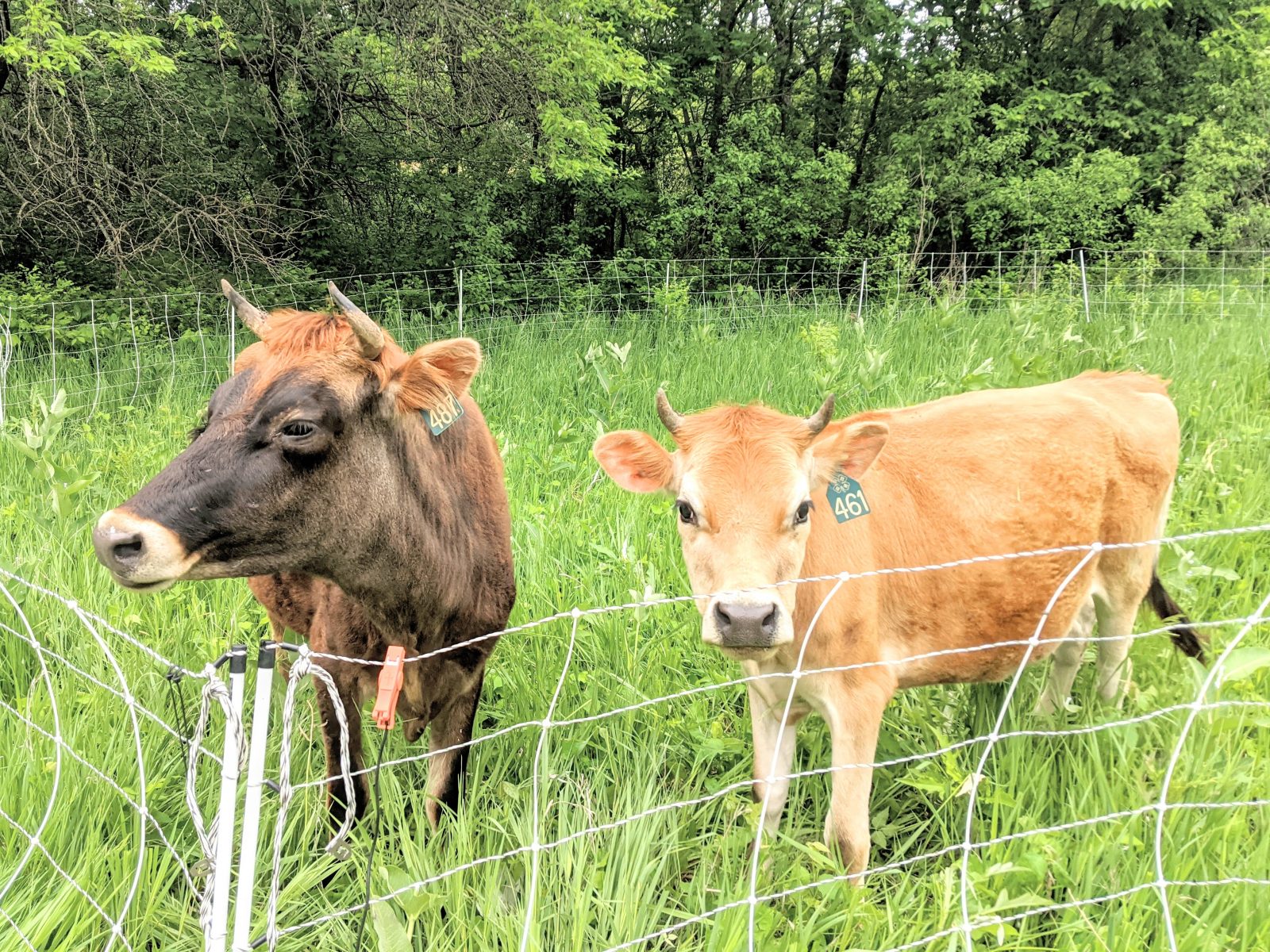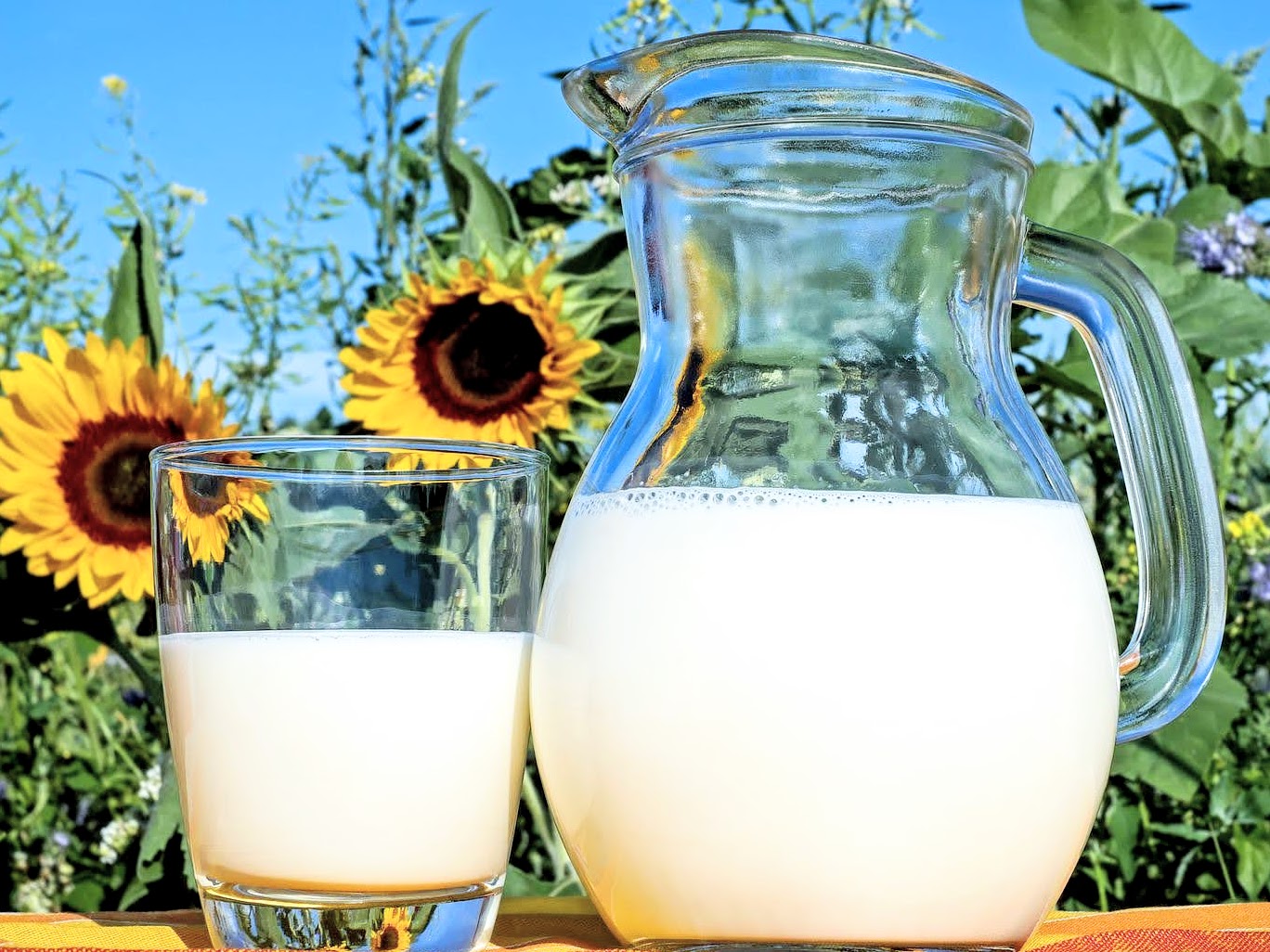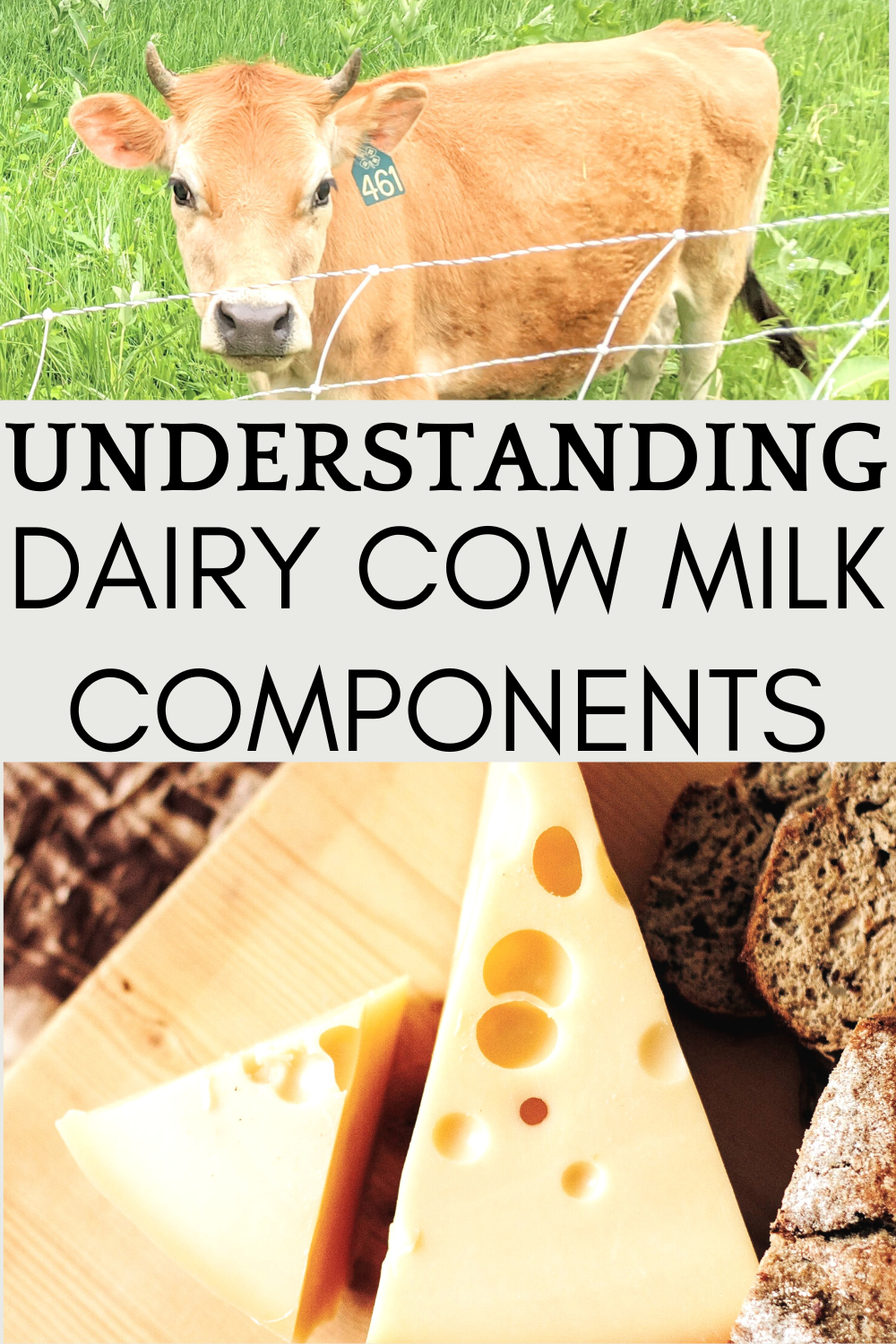Are you familiar with dairy cow milk components? Understanding dairy milk components will give you helpful and important insights into the milk that your family milk cow produces.

Dairy Cow Milk Components
While it is not an absolute necessity to know the milk components of you dairy cow, it can be a helpful tool in better understanding the unique elements of your family cow’s milk.
This is especially beneficial if you are looking to do certain things with the milk, such as cheesemaking. Or perhaps you are running a micro dairy and you want cows who have a higher milk yield.
In this post I am going to break down the basic milk components and explain how they affect the milk that your family milk cow produces.
Dairy Cow Milk Component Testing
I have two heifers that I tested for milk components. Buttercup is a Jersey (on the left) and Marigold is a Jersey/Friesan cross (on the right). I completed this testing through NEOGEN and shared a step by step explanation for how I did the test in this post.

As a side note, do you know how hard it is to get a decent picture of cattle? They really enjoy making themselves look unflattering. I know this is not the greatest picture of Buttercup, but it was the best I could get of the two of them together!
Anyway, back to milk components. This is what the test results looked like:

If you are not familiar with the components of cow milk, this looks pretty confusing, right? What do all those casein and beta things mean, and what are the letters under them?
Let’s take a closer look at the results.
A2 Beta Casein
The A2 beta casein is an interesting topic, and if you are curious to learn more about the A2 beta casein and A2/A2 milk, I have a whole post dedicated to the topic that you can read here.
The short version is that most mammals create milk that has the A2/A2 beta casein. Over time, an A1 variant occurred in cow milk, which means cows are capable of producing milk with either the A2 or A1 beta casein.
Why is this important? Well, there are studies that suggest that A2/A2 milk has more health benefits and is easier to digest. For that reason, many people prefer to drink A2/A2 milk.
In fact, many consumers actively seek out A2/A2 milk and it can be useful in marketing. So that is something to keep in mind if you plan to sell your milk.
The possible combinations that exist for the A2 beta casein milk component are:
A1/A1: produces A1 milk
A1/A2: produces milk with A1 and A2 beta casein
A2/A2: produces A2 milk
If you look at the results above you will see that both Buttercup and Marigold have A1/A2 beta casein.
Buttercup is in calf and was bred to a bull that has A2/A2 beta casein. That means her calf will either have A1/A2 or A2/A2 genetics. In just a few months, we will breed Marigold to an A2/A2 bull as well.
Kappa Casein
Kappa casein is an important milk component to understand for cheesemaking. Kappa casein is involved with the renneting stage of cheesemaking. There are three types of kappa casein, A, B, and E. The B variant is the most desirable for cheesemaking as it creates a better yield, while the E variant can have an adverse affect on cheesemaking.
Here are the possible combinations for the kappa casein:
AA: unfavorable for cheese production
AE: unfavorable for cheese production
AB: intermediate for cheese production
BE: intermediate for cheese production
BB: most favorable for cheese production
You can see that both Buttercup and Marigold have BB kappa casein, which is great for cheesemaking!

Beta Casein AB
Beta casein AB indicates whether a cow will produce a higher milk yield versus a milk with a higher protein level. The A variation is what creates a higher milk yield, while the B variation indicates a higher protein level (and therefore better cheesemaking components).
The possible combinations for beta casein AB are:
AA: higher milk yield, but less favorable for cheese production
AB: intermediate milk yield and intermediate cheese production
BB: lower milk yield, but most favorable for cheese production
This is the only milk component that was different for Buttercup and Marigold. Buttercup has beta casein AA, while Marigold has AB. That means Buttercup will have a higher milk production level, while Marigold will make milk with slightly higher protein.
Beta Lactoglobulin
The beta lactoglobulin milk component is a whey protein that affects the cheese yield that you will get from your cow’s milk. The B variant is more desirable for cheesemaking as it has a higher casein amount, and therefore creates a higher cheese yield.
The possible combinations for beta lactoglobulin are:
AA: lower cheese yield
AB: intermediate cheese yield
BB: most favorable cheese yield
Both Buttercup and Marigold have the AB beta lactoglobulin variant, which means they will be in the middle with their cheese yield.
Conclusion
Understanding milk components can be a useful tool in knowing how to process the milk that your cow produces. Furthermore, the information that you receive from testing milk components can be useful in marketing the milk if you plan to sell it.
What I learned from testing my two heifers is that they both have milk that has decent cheesemaking components. The one difference between them is that Buttercup will have a higher milk yield, while Marigold will have milk with a slightly higher protein content.
Isn’t it interesting that you can learn so much from a simple hair sample? I think livestock genetics are a fascinating world and I really enjoy working towards improving the genetics of my herd with helpful information such as this.
Do you have any experience with testing the milk components of your family milk cow? Share any comments or questions in the comments section below!


Wow, this was a really well done article. I hope to have a dairy cow someday, so I’m definitely bookmarking this!
I am so glad it was helpful!
This was the perfect amount of information for me! When I read articles on this topic, they just go into too much detail for me. All I need to know for now is yield and the effect on cheesemaking – this was perfect!
It is easy to get caught up in the finer details of it. I am so glad this was helpful to you!
Wow, there is so much to know about cow milk! I definitely had no idea about any of this before. Saving for later!
There is so much more to milk than what meets the eye!
I had absolutely no clue there was so much to cows and their milk. Lots of great information! Thank you for the education! 🙂
You’re welcome!
I can’t wait to get our dairy cow. I know it’s years in the future, but your posts really help make sure I’m finding a good breeder and solid cows.
Honestly, it is a great idea to start planning well ahead of time. Knowing what you are looking for will be important for a successful family cow.
Wow, this is very well written & informative post. I dont have cows but if I did, I am sure I could get a lot of helpful information you.
Thank you, Dusty!
This is very educational post. Thanks for sharing.
You’re welcome!